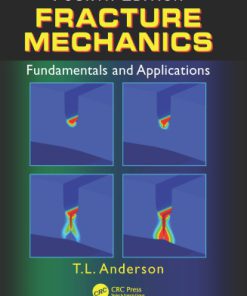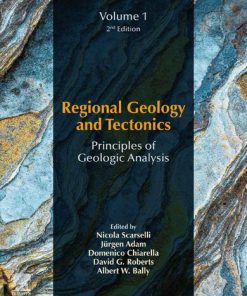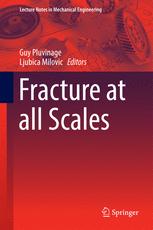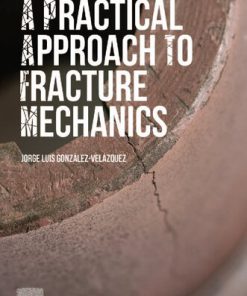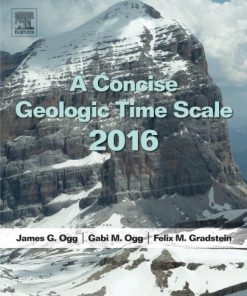Geologic Fracture Mechanics 1st Edition Richard 1108119026 9781108119023
$50.00 Original price was: $50.00.$25.00Current price is: $25.00.
This completed downloadable of Geologic Fracture Mechanics 1st Edition Richard A. Schultz
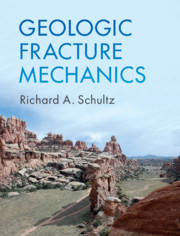
Instant downloaded Geologic Fracture Mechanics 1st Edition Richard A. Schultz pdf docx epub after payment.
Product details:
- ISBN 10: 1108119026
- ISBN 13: 9781108119023
- Author: Richard A. Schultz
This lively introduction to geologic fracture mechanics provides a consistent treatment of all common geologic structural discontinuities. It explores the formation, growth and interpretation of fractures and deformation bands, from theoretical, field and lab-based perspectives, bridging the gap between a general textbook treatment and the more advanced research literature. It allows the reader to acquire basic tools to interpret discontinuity origins, geometries, patterns and implications using many of the leading and contemporary concepts known to specialists in the field. Problem sets are provided at the end of each chapter, and worked examples are included within each chapter to illustrate topics and enable self-study. With all common geologic structures including joints, hydrofractures, faults, stylolites and deformation bands being discussed from a fresh perspective, it will be a useful reference for advanced students, researchers and industry practitioners interested in structural geology, neotectonics, rock mechanics, planetary geology, and reservoir geomechanics.
Table of contents:
1 Introduction to Geologic Structural Discontinuities
1.1 Localized Deformation Structures in Rock
1.2 What Is a Structural Discontinuity?
1.3 The Role of Lithology and Rock Properties
1.4 Displacement Modes
1.5 Using Geologic Fracture Mechanics in Research and Practice
1.6 Review of Important Concepts
1.7 Exercises
2 Elastic Rock Rheology and Stress Concentration
2.1 Introduction
2.2 Laboratory Testing of Rocks
2.3 Terminology from Rock Mechanics
2.4 Hooke’s Law
2.5 The Complete Stress–Strain Curve for Rock
2.6 Theoretical Strength of a Rock
2.7 Flaws and the Strength of a Plate
2.8 Review of Important Concepts
2.9 Exercises
3 Stress, Mohr Circles, and Deformation at Peak Strength
3.1 Introduction
3.2 Sign Conventions
3.3 Equations for Stresses
3.4 The Coulomb Criterion for Frictional Slip
3.5 More Complete Peak-Strength Criteria
3.6 Review of Important Concepts
3.7 Exercises
4 Cracks and Anticracks
4.1 Introduction
4.2 Why Study Cracks?
4.3 Surface Textures and Their Meaning
4.4 Joint Geometries
4.5 Stress States for Dilatant Cracking
4.6 Anticracks
4.7 Review of Important Concepts
4.8 Exercises
5 Discontinuity Patterns and Their Interpretation
5.1 Why Do Structural Discontinuities Occur in Patterns?
5.2 Typical Patterns
5.3 Review of Important Concepts
5.4 Exercises
6 Faults
6.1 Introduction
6.2 Fault Classification by Kinematics
6.3 Review of Fault Types
6.4 Stress States for Faulting
6.5 Faults as Sequential Structures
6.6 The Stepover Region: Key to Interpretation
6.7 Review of Important Concepts
6.8 Exercises
7 Deformation Bands
7.1 Introduction
7.2 Deformation Band Classification
7.3 Deformation Bands as Structural Discontinuities in Rock
7.4 Deformation of a Porous Granular Rock
7.5 The Evolutionary Sequence to Faults
7.6 Review of Important Concepts
7.7 Exercises
8 Fracture Mechanics: A Tour of Basic Principles
8.1 Introduction
8.2 What Makes a Fracture Open, Close, or Shear?
8.3 Fractures in Perfect Rock: Linear Elastic Fracture Mechanics
8.4 Rules for Discontinuity Propagation
8.5 Review of Important Concepts
8.6 Exercises
9 Beyond Linear Elastic Fracture Mechanics
9.1 Introduction
9.2 The Realm of the Geologic Fracture
9.3 Better Terminations: Yield Strength and the End-Zone Concept
9.4 Elastic–Plastic Fracture Growth
9.5 Displacement–Length Scaling
9.6 Populations of Geologic Structural Discontinuities
9.7 Review of Important Concepts
9.8 Exercises
People also search:
fracture mechanics examples
fracture mechanics theory
elements of fracture mechanics
history of fracture mechanics
geological fracture
You may also like…
Engineering - Electrical & Electronic Engineering
Grob’s Basic Electronics Mitchel E. Schultz 0073373877 9780073373874
Engineering
Fracture Mechanics: Fundamentals and Applications, Fourth Edition Ted 1498728146 9781498728140
Earth Sciences - Geology
Engineering
Relationships & Lifestyle - Diet & Nutrition
Earth Sciences - Earth History





